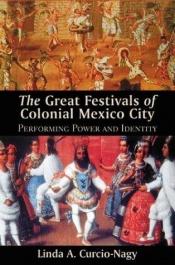The great festivals of colonial Mexico City : performing power and identity
Blurb
This innovative work of cultural history examines the function of public rituals in colonial Mexico City. Festivals were a defining characteristic of life in the capital. For most of the colonial period, inhabitants could witness as many as 100 religious and civil celebrations in a year. The largest of these events, both civil and religious, were sponsored by the authorities and were crucial means to embody political and social concepts.
The first European public rituals were introduced immediately after the conquest of the Aztec capital. Spanish priests seeking to evangelize the native population introduced Catholic festivals, and civil authorities sponsored celebrations designed to glorify the Spanish empire. Spectacle was one tool in an arsenal of colonizing agents, and over time the growing diversity of the population made festival statecraft all the more important, as government-sponsored revelry attempted to promote shared histories and values among diverse and potentially dangerous groups.
Festivals organizers developed a highly sophisticated message embedded within the celebrations that delineated the principles of leadership and the duties of both rulers and vassals. The pervasiveness of festivals and the power of the political message associated with them created possibilities for individuals to assess and participate in a larger discussion of good governance in the colony.

 English
English Español
Español Deutsch
Deutsch










Member Reviews Write your own review
Be the first person to review
Log in to comment